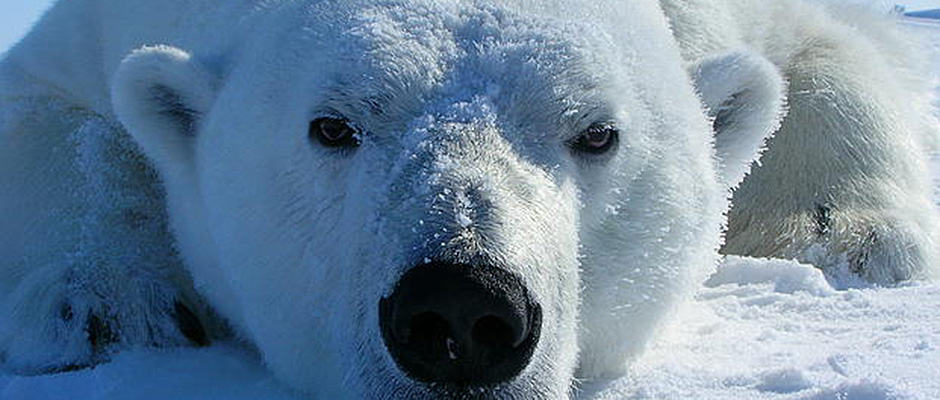Share this article
A Chilly Tale: Balding Polar Bears
A polar bear’s signature white pelt does more than camouflage the large hunter on snow-covered terrains. Its thick fur also provides a vital layer of insulation, protecting it from subfreezing temperatures. But some bears in Alaska may have a chink in their thermal armor. A small percentage of polar bears that hunt in Alaska’s southern Beaufort Sea experience hair loss, or alopecia, according to a new U.S. Geological Survey study published in the Journal of Wildlife Diseases.
USGS scientists have been studying polar bears since the mid 1980s, and when they first saw signs of hair loss in the spring of 1998 they took notice. “There weren’t a whole lot of bears that showed signs [of alopecia], but enough where people were noting that it wasn’t what we normally see,” said Todd Atwood, wildlife biologist and leader of the USGS polar bear research group.
Every year, Atwood and a team of scientists weigh, age, measure, and assess the overall health of each bear they encounter during a six- to eight-week survey period in Alaska. From 1998 onward, they added observations regarding alopecia to the repertoire of data they collected. When the researchers found an alopecic polar bear, they plucked hair and scraped skin samples. They also made sure to collect hair and skin from unaffected bears for comparison.
Alopecia can look different from bear to bear, according to Atwood. Some polar bears may have thinning hair around their neck or bald patches anywhere from their shoulder blades to their nose. And the patches can vary in size. Sometimes they are about as big as a sheet of printer paper and other times as small as a silver dollar. Crusty or oozing lesions can dot the leathery, exposed skin.
The cause of polar bear alopecia still eludes Atwood and his team. One theory is that the hair loss may be connected to a bear’s health — the study found that bears with alopecia tended to have poorer body conditions than their unaffected peers. In the winter, a bear’s body heat will escape through bald or thinning patches in their coat. The bear must then exert a tremendous amount of energy to maintain its core body temperature, which would cause the bear to use up vital fat reserves and leave the it vulnerable to other diseases or infections. But it is unclear to the scientists whether the hair loss causes the decline in health or is a symptom of it, leaving scientists with a “chicken-or-the-egg” scenario.
Because alopecia affects such a small number of bears — only 3.4 percent of those sampled experienced hair loss — the scientists do not consider the disease a serious, long-term threat to the polar bear population. However, it may be more serious in some years than others. In 1999, for example, 16 percent of polar bears had alopecia, and in 2012 the number spiked to 28 percent — a “striking” difference from the 14-year average of four percent, according to Atwood. Now, scientists can look at any given year and tell whether they are seeing an unusual number of alopecia cases. “An important aspect of managing at-risk or threatened species is being able to track changes over time,” he said.
Header Image: Image Credit: Eric V. Regehr, USGS








